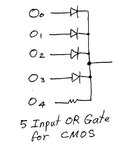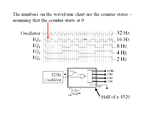KerimF
Advanced Member level 5
- Joined
- May 17, 2011
- Messages
- 1,556
- Helped
- 376
- Reputation
- 760
- Reaction score
- 379
- Trophy points
- 1,373
- Location
- Aleppo city - Syria
- Activity points
- 13,106
Sorry Len for not being too clear in my previous post.
In case of single LEDs, I meant by different drivers, just the different limiting resistors. And since I usually design circuits for consumers and some circuits are assembled manually when their quantity is not big, my assistants need to be more careful in placing the different resistors than if their values were equal.
On the other hand, I produced red and green modules (16 * 8 pixels), if cascaded they will form a simple long moving message sign. Each pixel is made with 4 LEDs (2 branches of 2 LEDs in series). In case of red module, a 5V power supply is good. But since the green LEDs needs 3.3V instead of 2V, I had to supply them with 7V instead.
I think you got the idea now.
Kerim
In case of single LEDs, I meant by different drivers, just the different limiting resistors. And since I usually design circuits for consumers and some circuits are assembled manually when their quantity is not big, my assistants need to be more careful in placing the different resistors than if their values were equal.
On the other hand, I produced red and green modules (16 * 8 pixels), if cascaded they will form a simple long moving message sign. Each pixel is made with 4 LEDs (2 branches of 2 LEDs in series). In case of red module, a 5V power supply is good. But since the green LEDs needs 3.3V instead of 2V, I had to supply them with 7V instead.
I think you got the idea now.
Kerim


